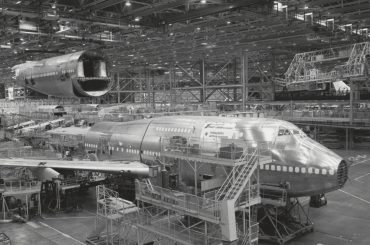 The maiden flight of SpaceX’s Falcon Heavy rocket, launched from Kennedy Space Centre at 7:45am AEST on February 7, was a monumental event.
The maiden flight of SpaceX’s Falcon Heavy rocket, launched from Kennedy Space Centre at 7:45am AEST on February 7, was a monumental event.
It represents a huge leap forward towards the return of human space exploration.
The Falcon Heavy is the world’s biggest operational rocket by a factor of two – it’s capable of launching payloads of up to 63.5 tonnes. In the future Falcon Heavy will launch astronauts to Earth orbit and take large satellites to their designated orbits.

As this first launch was a test flight it had no customer payload was onboard. However, to properly test the rocket, SpaceX engineers needed to fill it with a representative payload that would simulate an operational launch. To the delight of technology fans around the world, that payload included SpaceX CEO Elon Musk’s Tesla Roadster red convertible – complete with mock passenger in a spacesuit, dubbed Starman, listening to Space Oddity on repeat!
Currently over Australia ?? pic.twitter.com/HAya3E6OEJ
— Elon Musk (@elonmusk) February 6, 2018
The launch was successful, with thousands of bystanders cheering as the huge rocket soared into the sky. The two boosters were recycled from previous launches, and SpaceX expected to recover them from this launch as well. After their final burn, the boosters detached and travelled back to Earth together to two side-by-side landing pads where they landed in unison. The sight of the boosters landing together was magical and surreal.
While the boosters landing was an awesome moment, the rest of the mission continued. Falcon Heavy continued to hurtle through the atmosphere, taking that Roadster to space.
Once separated from the Roadster payload, the final rocket booster then detached and made its way back to Earth, where it was planned to be recovered and reused after it landed on an ocean platform. The live broadcast cut out before the rocket landed, but later we found out that an engine failure resulted in the rocket colliding with the surface of the ocean at 300mph and around 300ft from the ocean platform.
Meanwhile Starman and his Roadster are in an orbit around Earth. In the lead-up to the launch Elon Musk revealed that his Roadster would continue on from Earth orbit on a journey to orbit Mars. However, several hours after the launch, Musk tweeted that the Roadster overshot it’s path to Mars and would instead be flying out into the Asteroid Belt.
Third burn successful. Exceeded Mars orbit and kept going to the Asteroid Belt. pic.twitter.com/bKhRN73WHF
— Elon Musk (@elonmusk) February 7, 2018
The original final destination of the Roadster was an ode to the company’s future plans of sending humans to Mars in the next decade.
For now, Mars might have to wait, but the Falcon Heavy launch was still an incredible achievement.
Solange Cunin founded and is the CEO of Cuberider, which provides innovative STEM programs for
Australian high school students. Under her leadership, and at the age of 23, Solange led Cuberider to place the first Australian payload to ever go aboard the International Space Station, in December 2016.













